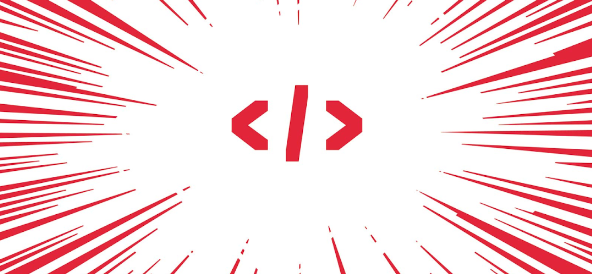Content fatigue: Key takeaways
- Content fatigue is overwhelming people due to high volume.
- The top tiring formats are newsletters, podcasts, communities.
- Antidotes: shorter newsletters, segmented podcasts, focused communities.
- Psychological impact includes stress and reduced attention span.
- Business impacts include choice paralysis, focus on quality over quantity.
People are tired of all the content they need to consume, and marketers are struggling to reach them. There’s an official term for it: content fatigue.
In researching content fatigue, I wanted to understand what’s going on, why it matters, and what we can do about it.
The rise of content fatigue
Content fatigue is when you feel tired or stressed by the huge amount of digital stuff like newsletters, podcasts, and social media posts.
More people are feeling overwhelmed because there’s just so much to keep up with.
“I just feel like there’s not enough time to consume all the content I’d like to. Even consuming the amount I do is too much.”
Alex Minor, video marketing specialist, Florida
The problem is only getting worse.
According to the Content Marketing Institute, 91% of B2B marketers used content marketing, and 60% of marketers produce one or more new pieces of content per day.
Statista reports the number of podcasts at 3.2 million in 2023. The number of episodes has increased to more than 178 million published as of October 2023.
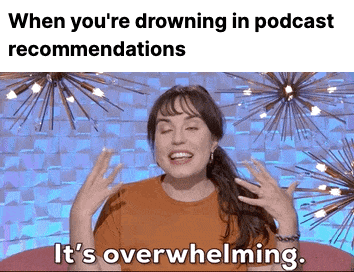
On social media, the numbers are even more staggering:
- As of April 2022, Facebook users shared 1.7 million pieces of content every minute.
- On YouTube, 500 hours of video are uploaded every minute.
There’s just not enough time to consume all of it.
“I’ve never been so burnt out from trying to consume content.”
Stephanie Trovato, copywriting agency founder, New York
The most tiring content right now
Thanks to this content shock, content marketers everywhere may soon struggle to build an engaged audience.
An informal LinkedIn poll showed that newsletters (45%), podcasts (22%), and communities (21%) are the top three formats people are most worn out by.
“I have 4,436 emails sitting in my inbox and the vast majority are newsletters. There are too many out there for me to pay attention.”
Clémence Lepers, marketer, San Francisco

Newsletters
69% of B2B marketers use newsletters to distribute content, according to the CMI.
But much of this content may be ending up in spam, going unread, or simply getting deleted.
Cristina Daroca, a Boston-based marketer, reported that newsletters just sit in her inbox. “I’m genuinely interested. I just can’t find the time or head space to read them.”
“I subscribe to 100 dope newsletters on Substack, and probably only skim 5-10 a week.”
Pasha Irshad, Co-founder at Shape & Scale, Washington DC
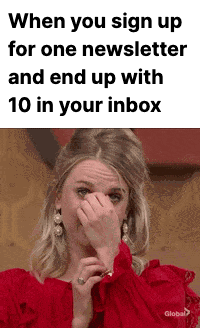
The key to running a successful newsletter strategy might be to reduce the feeling of exhaustion, not necessarily the depth of detail.
Stacey Holsinger, a Maryland-based entrepreneur, agrees.
“I only have two newsletters I save in my inbox — both excellent and easy to digest,” she says. “I don’t feel exhausted after I read them, and I always learn something new.”
So how can content creators fix this? For newsletters, one idea is to make them shorter, more focused, and more fun.
Instead of a long weekly update, consider a quick tip 2-3 times weekly. We outline other approaches in our newsletter strategy guide.
“The content must be well curated and short, sweet, and fun. You gotta give me at least one little chuckle in the first two paragraphs.”
Pilar Suquilvide, account director, Buenos Aires
Choosing your publishing time carefully and reducing the frequency of your emails during event planning can also help.
“Newsletters can be so relentless, especially if gearing up to a launch” says Helen Goodwin, a Brisbane-based communications specialist
“I can’t control when newsletters ping into my inbox. At 11 pm Australian time, I get a bunch of pings from the US. Make it stop!”
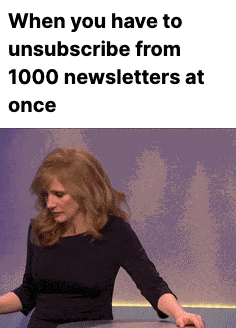
Podcasts
Podcasts are another point of contention. Sara Lattanzio, the LinkedIn poll’s author and a Zurich-based content marketing advisor, said, “I just can’t anymore with podcasts. Dedicating 1 hour is a high commitment.”
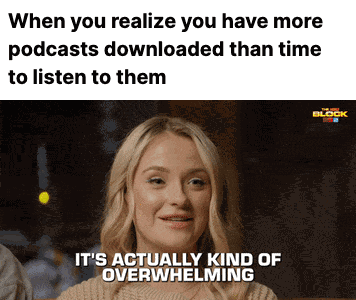
While podcast consumption is rising, the length, depth, and formats are three key factors that determine how listeners feel about them.
“Podcasts are too long for me,” says Nick Colthorpe, a London-based copywriter. “Videos are more engaging, articles can be skimmed, and AI can summarize lengthy content.”
Alex Minor, a Florida-based video marketing specialist, adds, “I don’t want to listen to any podcast that doesn’t have a video element.”
Formal research backs his sentiments. A report by the Reuters Institute at the University of Oxford found that deep dive podcasts, along with extended chat shows like The Joe Rogan Experience, are the most widely consumed across markets.
The report also identified the growing popularity of video-led or hybrid news podcasts. Sara, the poll’s author, attests to this.
“I know I will have to get back to [a podcast] and visualize it somehow,” says Sara. “For truly educational content I need video, text or an interactive format.”
For podcasts, it might help to break them into shorter, easier-to-digest segments.
Or, offer a video version so people can see faces and emotions and meet the people behind your brand.
“I recently started breaking up my 30-min shows into 60-second or less YouTube shorts,” says Linda Melone, an Arizona-based copywriter and podcast host. They’re doing really well, much better than the full-length versions.”
And content depth seems to be a recurring theme. “Sooooo many podcasts,” says Jona Koekelcoren, an Antwerp-based digital expert. “And they’re either way too long, or far too shallow.”

It’s also incredibly important to transcribe all your podcast episodes.
This isn’t just because “reading is fast and listening is slow,” as Inna Haidamaka, a Valencia-based content marketer, puts it.
Transcripts can also help make your content more accessible to those who have hearing difficulties, or who can’t play audio because they’re on a plane, train, or some other environment where they can’t listen out loud.
I typically run my content interviews through Descript (sometimes Otter) to auto-generate captions, which I condense into edited summaries for faster reading. I can’t recommend these tools enough.
Communities
Anyone who’s ever been part of a large Slack group or lively Facebook group can attest to the sheer feeling of exhaustion that comes from endless notifications.
Being part of over 40 Slack groups (Slofile has been a blessing and a curse), I’ve had to mute a lot of channels that simply weren’t additive or productive — especially to an ADHD brain.
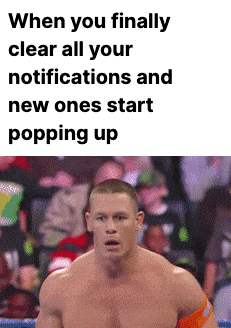
“I love [communities] but they can get really overwhelming,” says Filipa Canelas, a Porto-based content agency founder. “The flow of information just never ends and that makes me anxious.”
Instead of trying to be everything to everyone, communities can offer value by being more selective and focused on a specific topic or audience.
Another idea is to offer email summaries of key discussions so people can catch up quickly, like some Slack group admins do.
Long form content
Long-form articles fared a bit better. Natasha Blimkie, an Ontario-based conversion copywriter and messaging strategist, said she doesn’t feel the same fatigue from reading long-form content or books.
And there’s data supporting the creation of long-form digital content, at least from an SEO perspective.
Per Backlinko, long-form content gets an average of 77.2% more links than short articles.
And while long-form content may appear less tiring because it offers a deeper dive, it can still wear people out if it’s not well-crafted or if it’s too basic.

“I can enjoy a one-hour podcast that’s in-depth during a walk or travel time. But 30 newsletters a day, each with its own advice and ultimate conversion goal, just overwhelms me.”
Livia Hirsch, writer, Netherlands
For long-form articles, using engaging visuals and breaking up the text can make it easier to read. For social media posts, keeping them short and to the point can help.
Stress, trust, and content fatigue
There’s never been more information and entertainment at our fingertips.
According to a Pew Research study, most adults worldwide feel that social media helps them stay updated on current events.
The downside is the feeling of overwhelm. A 2017 survey by the American Psychological Association found that 56% of Americans say that staying informed causes them stress.
This is on top of the stress they already feel from other parts of their lives. In 2022, 30% of US adults reported being so stressed they feel numb.
When you add fluffy content to the mix, you reduce their likelihood of engaging with your content altogether.
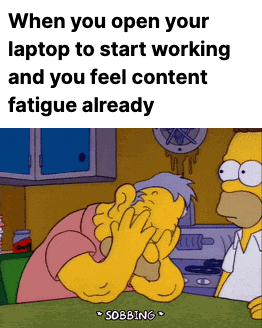
People already struggle to filter through the noise to find high quality content.
Per the Reuters Institute report, only 40% of respondents say they trust most news most of the time.
They’re also fighting ad fatigue from endless marketing messages across every marketing channel.
Audiences today have to be more discerning about what they consume — including your content.
The business impact of content fatigue
Feeling overwhelmed by too much content can affect your audience in different ways. For one, it can make it hard for them to focus.
Dr. Gloria Mark, a professor of informatics at the University of California, Irvine, studies how digital media affects our lives.
She found that the average attention on a screen has dropped from 150 seconds in 2004 to just 47 seconds on average today.
That’s a measly one-third of where we were two decades ago. In other words:
Your audience already struggles to pay attention to screens.
Fluffy content makes them even more likely to disengage, do something else, and forget you entirely.
Another impact is on decision-making. When there’s too much to choose from, we often end up not choosing anything at all.
This is called “choice paralysis” (or choice overload) and is a well-studied psychological phenomenon.
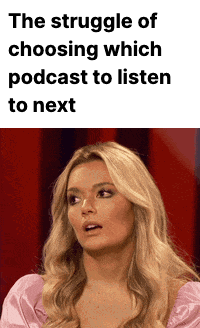
For example, a famous jam study showed that customers were 10 times more likely to purchase jam when offered just 6 varieties instead of 24.
When your content lacks clear, actionable next steps, you reduce the likelihood of converting potential customers.
Content fatigue also affects how much we enjoy the content we do consume. Many households are now at a saturation point, according to a 2021 UK survey by Ernst & Young.
This feeling of being overwhelmed can lead to “unplugging” or taking breaks from digital content altogether.
Of 6,740 US adults surveyed, 36% have taken an extended break from social media because it was having a negative effect on their mental health.
Would the quality of your content survive someone’s social media break? When they returned, would they rush to your channels to catch up on what they missed?
These aren’t easy questions to answer, but they force content creators everywhere to raise the bar on content marketing.
How to avoid creating content fatigue
There’s always room for quality in the content creation process.
Per the CMI, 83% of those who differentiate their content said they do so by producing better quality content than their competitors.
Only 30% stand out by making more content — and as we know, more content isn’t always the answer.
Hell, better content distribution might actually do more for your marketing efforts than simply producing more content.

Source: Content Marketing Institute (2022)
Creativity is key
‘Quality’ is subjective and may look different for each content creator, but creativity (or the lack thereof) seems to be a key theme in audience complaints.
“I had a period when I subscribed to every channel, every newsletter, every resource,” says Elizabeth Boyarko, a Minsk-based content lead. “But now I see more and more duplicates in their content with the same thoughts and ideas.”
These sentiments extend to Twitter and LinkedIn, where the rise (and overuse) of hooks such as these ones) can start to come off as repetitive and cause social media fatigue.
“I had to remove connections and unfollow people because my feed was literally nothing but the same hook template again and again and again,” says Jason Vana, an Illinois-based marketing agency founder.

Ben Goodey, a London-based marketing strategist, agrees. “Hardly anyone is standing out [on LinkedIn and Twitter] at the moment. Same outdated advice, same font, same voice.”
As a content marketer, business executive, or LinkedIn ghostwriter, there are many ways to infuse creativity in your content.
You can apply content formats from other domains into your work, aim to be prolific, and be systematic about research.
I share more about these tips and other valuable content ideas in my comprehensive guide to content marketing creativity.
Brevity is a blessing
With all of us swimming in so much content against limited time, brevity can give content marketers a weapon against content fatigue.
When your readers or viewers come to expect bite-sized insights repeatedly, they form a habit of at least skimming your content whenever it lands in their feeds or inboxes.
There’s a place for long-form content in your content strategy, and you should definitely include it in your content calendar.
However, consider how you can reduce the mental tax on your audience and still drive engagement.

Just wrapped up that long blog post? Summarize it with ChatGPT for social media.
Published a white paper? Create a short video outlining the key findings and other relevant content around it, fully captioned and edited.
Recently released a new podcast episode? Use Descript to create an audiogram you can share on social media.
Each of these tips involves distilling your content to its essence for easier, faster consumption.
Interactive content can help
Creating interactive content can help beat content fatigue, especially in B2B.
Per Mediafly, the pandemic increased content usage by 207%, and interactive content saw 28% more views than non-interactive content.
To tap into this, consider using polls or quizzes to engage your readers.
Most social media platforms allow some form of polling, including Instagram, LinkedIn, Facebook, TikTok, and Twitter.
Animations are another way to grab and hold attention for longer, and you can use tools like Adobe Character Animator to create simple voiced animations.
How to manage content fatigue as a creator
Unsurprisingly, content creators also feel overwhelmed by too much content, especially when comparing themselves to other creators.
“I’ve gotten fatigue from looking at competitors too much,” says Jacob Statler, a DC-based content strategist. “I’ve found it easier to create content when I focus on my business and clients.”
One approach to combating this is to be selective about what you consume. Curate your content diet as you would your nutritional one.
Another strategy is to set specific times for consuming content.
For example, instead of checking your email or social media feeds throughout the day, limit yourself to only checking your notifications at 10am, 2pm, and 6pm.
This can reduce feeling overwhelmed and make it easier to focus on other tasks.

Apps like Pocket or Feedly allow you to save articles or posts for later, so you can read them when you have more time.
Finally, taking breaks from digital content is a valid strategy.
Stepping away from the screen can be beneficial for both your mental well-being and productivity.
“I have a great desire to unsubscribe from everything and spend quality time on a farm,” says Boyarko, the Minsk-based content lead.
Final thoughts on content fatigue
Content is a powerful tool for engaging a wider audience and stretching your marketing budget.
But there’s just too much of the same stuff and not enough time for it all.
Content fatigue affects everyone, not just those who read or watch it.
It also affects creators — those in social media marketing, content creation, and influencer marketing.
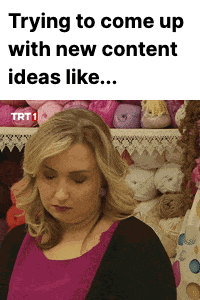
If you make content for a social media platform or brand channel, think about what your followers really want. You don’t get a cookie for merely making it longer.
Try shorter newsletters or quicker podcast episodes, and focus on quality over quantity.
By doing this, we can all make content a bit less tiring for everyone.
Related articles:



